General
-
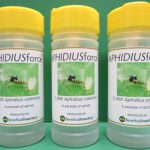 APHIDIUSforce™ C (500/ 1,000/ 5,000)$35.95 – $332.95
APHIDIUSforce™ C (500/ 1,000/ 5,000)$35.95 – $332.95 -
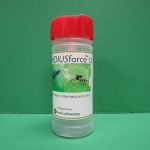 APHIDIUSforce™ CE (500/ 1,000/ 5,000)$93.95 – $922.95
APHIDIUSforce™ CE (500/ 1,000/ 5,000)$93.95 – $922.95 -
 A.colemani/ A.ervi/ A.abdominalis/ A. matricariae mix – aphid parasite (750)$129.95
A.colemani/ A.ervi/ A.abdominalis/ A. matricariae mix – aphid parasite (750)$129.95 -
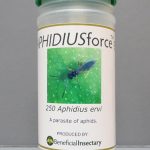 APHIDIUSforce™ E (250/500/1,000)$66.95 – $969.95
APHIDIUSforce™ E (250/500/1,000)$66.95 – $969.95
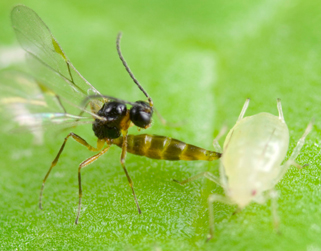
Both Aphidius colemani (APHIDIUSforce C) and Aphidius ervi (APHIDIUSforce E) are parasitoid wasps that will attack many common species of aphids. A. colemani will attack “smaller” aphid species such as Melon Aphid (Aphis gossypii) and Green Peach Aphid (Myzus persicae). A. ervi attacks “larger” species such as Potato Aphid (Macrosiphum euphorbiae) and Foxglove Aphid (Aulacorthum solani). These are some of the most common pest aphids, but all total, over 40 species are hosts for either A. colemani or A. ervi, or both.
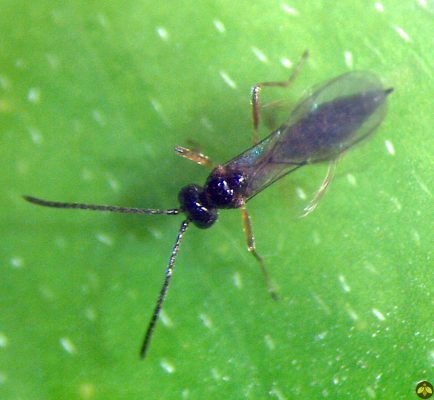
It has been observed that both A. colemani and A. ervi will parasitize the hemp/cannabis aphid (Phorodon cannabis). As with most biocontrol agents, they are best used as a preventative when aphid levels are either low, or not there at all. However, higher rates of the wasps in conjunction with aphid predators such as Chrysoperla or Aphidoletes can be used for outbreaks. A. colemani is particularly effective when used with banker plants.
Life-History
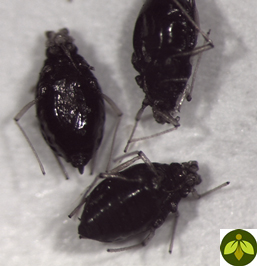
Female wasps of both species will sting and inject a single egg inside of an aphid. One female can sting hundreds of aphids in her two-week lifetime, although most of this parasitation occurs in the first couple days after her emergence. Once the egg hatches, the larva slowly consumes the aphid from the inside. About a week to 10 days later, the larva will be ready to pupate. It will then kill the aphid and spin silk around it, turning it into a “mummy.” In another week to 10 days, the pupating wasp finishes its transformation into an adult and chews a circular hole in the back of the aphid from which it emerges. Adults are extremely strong flyers and females will cover large distances in search of aphids. They work best at temperatures between 64-75°F, although a few degrees higher or lower should not hinder them too much. They are not impacted by short day length, so it’s possible to use them year-round if the temperature is in range for them.
Benefits
As stated above, both Aphidius species are prolific and can parasitize hundreds of aphids. Adults are good searchers and often find aphid colonies before greenhouse scouts do. They can be applied in many different crops and growing systems, including tomatoes. The fact that they are not hindered by low light levels is helpful for getting them established early in the growing season. Aphidius colemani having the ability to establish on banker plants allows for more room in the budget for other biocontrol agents.
Scouting
Both Aphidius species are easy to scout for. Often times you can see them flying around the crop in search of aphids. You can also easily see the mummies that the wasps create. It is sometimes possible to see the wasp larva inside the aphid. However, takes some magnification and the right lighting. In the later stages of larval development, just before the wasps pupates, the aphid will become bulbous and often look lighter in color than the other aphids in the same colony.
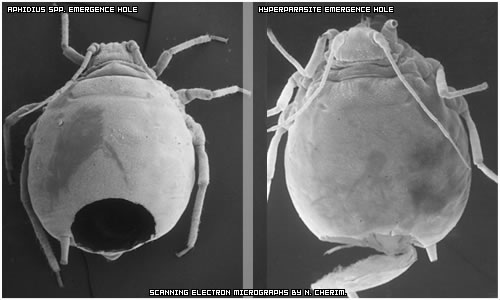
It should be noted that when scouting, look out for hyperparasitoids, especially in the late summer months. Hyperparasitoids are other species of parasitoid wasps that specifically parasitize aphids that have already been parasitized. They can hinder a biocontrol program because they kill the Aphidius developing inside the aphids. Often, but not always, hyperparasitoids will result in a jagged exit hole on the aphid mummy, as opposed to the nearly perfectly round hole that Aphidius spp. produce.
Advisories
Yellow sticky cards should be removed for the first few days after release of the wasps. Blue cards are fine to keep the entire time. If ants are present, be sure that they are controlled before releasing either Aphidius species or aphid predators. Aphids produce honeydew that the ants feed on. Because of this, ants protect them from parasitoids or predators
Usages
Aphidius spp. can be released in greenhouses, indoor facilities, fields, orchards, gardens, or virtually anywhere else with the presence of suitable pest aphids.
Release Rates for Aphidius colemani
| Classification | Release Information |
|---|---|
| Preventative | 1-5 per 100 square ft., weekly |
| Hot spots | 5-25 per 100 square ft., weekly |
Release Rates for Aphidius ervi
| Classification | Release Information |
|---|---|
| Preventative | 1-5 per 100 square ft., weekly |
| Hot spots | 5-25 per 100 square ft., weekly |
Release Rates for mixed Aphidius/Aphelinus bottles
| Classification | Release Information |
|---|---|
| Preventative | 1 per 10 square ft., weekly as needed |
| Hot spots | 5 per 10 square ft., weekly as needed |
